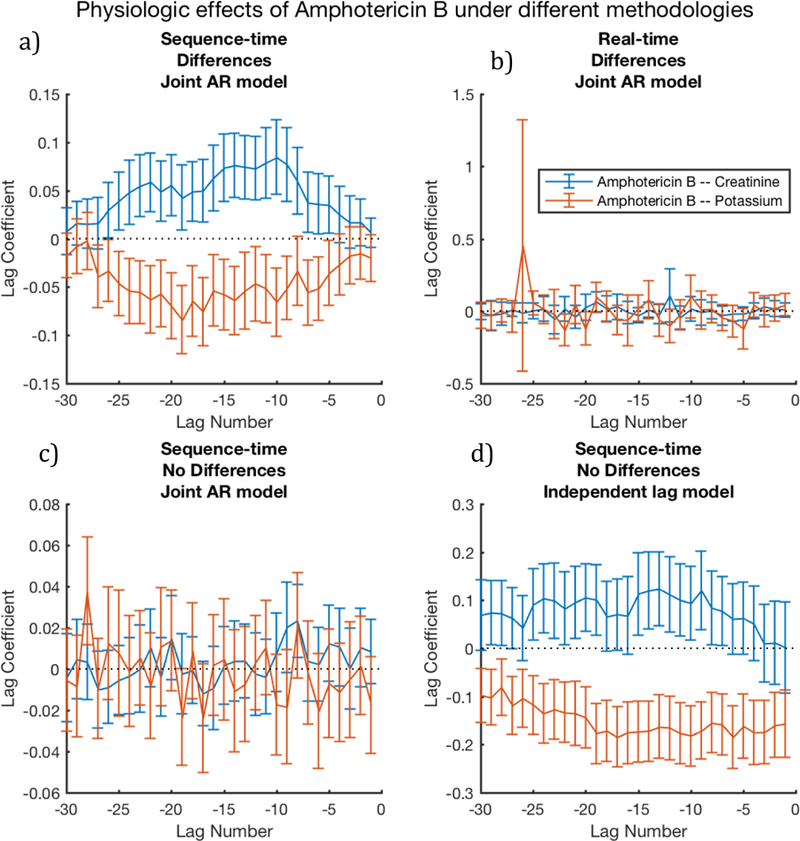Figure 3.

Signal quality is noticeably affected by combinations of methodological choices, especially temporal parameterizations, differencing, and lag model type; here we vary these 3 dimensions, and fix the remaining 3 using intra-patient normalization, no binning, and no additional context variables. Here, we expect Amphotericin B to increase Creatinine (hence, blue should be significantly above zero) and Amphotericin B to decrease Potassium (hence, red should be significantly below zero). The figures demonstrate that sequence-time is often a necessary, singular choice: figure 3a, which uses sequence time, produces the expected result, whereas figure 3b shows a non-significant noise pattern; the methods used in these figures differ only by their treatment of temporal parameterization. The figures also demonstrate that methods must be combined carefully—figure 3a combines differencing with the joint AR model, and produces expected patterns, whereas figure 3c uses an identical method, but omits differencing, and produces a non-significant noise pattern. However, pairing the independent lag model without differencing appears to reconstruct the signal, albeit with less significance than fig 3a.
